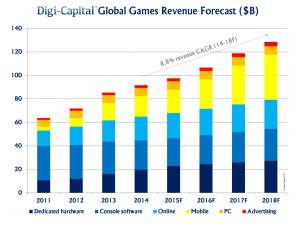BY CARLOS EDUARDO ⋅ AUGUST 22, 2013
 A big thank you to Bretton Putter of the Forsyth group for Feedback and Editorial Input.
A big thank you to Bretton Putter of the Forsyth group for Feedback and Editorial Input.
This post is not about how to hire or how to fire someone. It is about highlighting the potential reasons why employees relationships can fall apart and lead to a dismissal down the road. Hopefully this is post provides with your the necessary information for you to consider on how you can prevent this from happening by setting up an appropriate hiring process and cultivating an environment where employees are not set up for failure within their defined roles.
As you likely already know, hiring and firing are probably two of the most difficult things to do in a company. That’s why usually, for key hires, a company’s leadership is directly involved in the selection and interview process. Ideally, if done right, you never find yourself in a position where you have to lay someone off, but what if you do? Was it entirely the employee’s fault, or could you have done something to prevent it from happening?
Let’s start with looking at your hiring process and mistakes that can lead to an employee relationship breaking down:
Hiring Process Mistakes – These are mistakes you could have prevented before hiring
No defined internal interview process – By not having a clear process which a candidate goes through to assess the communication skills of the new potential prospect and their fit within the company culture, you run the risk of the employee potentially not fitting in.
Not geographically disciplined – In a startup everyone should be together, if it’s not possible, then people should spend time with the home-team at least 3 months. Having remote teams early on is very hard although some companies do manage to pull it off at the cost of their sleep.
Not qualified enough to do the job – In a startup, you don’t really have the time to train someone. Be careful about relying too much on training you could give the candidate, they should be self-sufficient pretty quickly on. Also, sometimes we can project a bit of ourselves and our ambitions onto people, so be mindful of personal biases when evaluating someone.
Not being able to commit to the company’s work ethic – Some companies have the expectation that you will be there from 9-5 or some regular schedule (think of customer services roles that require people to be at their desks by a certain time). Other companies have results oriented work environments where there is no need for someone to be there at a specific time so long as they get their work done. Make sure you define what your work ethic is so that people aren’t caught off guard later.
After the Fact Mistakes Analysis – These are mistakes you might have committed unknowingly that led to a dismissal.
Poor Role Definition – If you or the hiring manager don’t know what the role this person will have (or main responsibility will be) within a company, you’re just setting up that new employee to linger in role purgatory, not knowing what they can control and what is someone else’s.
Poor Title Choice – If you give a new employee a title that is above their experience, particularly if you give them a C[x]O title, you set them up for potential failure if they can’t live up to it, because then you can’t hire above them to help them out and their ‘power’ position may create tension between other employees as their inexperience causes blunders. This may affect communication with peers as well. For more on the different philosophies on title choice, read the following
Poor Communications of responsibilities and expectations – Similar to clear role definition, poor communication of what is expected of them and by when, leads to that employee lacking direction and perhaps not going down a path that is necessarily the one that your organisation needs.
Not acting fast enough to rectify a situation – If something is going wrong, or an employee isn’t doing what they need to be doing according to their level, perhaps there is something awry in what they perceive things are they should be doing. Don’t wait because you feel awkward about it or want to see if it improves on its own. Jump in there and have a structured conversation with the employee to make sure roles and responsibilities are mutually agreed and that you both are aligned on what needs to happen next.
Poor Key Performance Indicator definition – defining how someone is doing well helps them to adjust their actions so that they reach the set goals. Not every employee will have a specific KPI tailored to their function, but if it is a key hire, they will likely have awareness of the company’s key KPIs and how their role aids the company in achieving them.
Poor management (in general) – Motivating people is not easy. Getting them to buy in to what you are doing is sometimes beyond just a pay check. You need to inspire them to do more not micromanage them if things aren’t going well. Read the book ‘Drive’ by Daniel H. Pink to get a feel for some of the latest thinking on motivational theory.
Other problematic employees – Sometimes organisations have bullies. You may hire someone that you think is a great fit for the job, and perhaps they would be if it weren’t to an already existing employee who ‘preys’ on others. Typically this bully can also be someone who is really good at their job so it isn’t always readily apparent from their performance. However, organisational bullies can create a reason for why new employees leave. Thus, never rule out this possibility as sometimes its hard for new employees to muster up the courage to report on a peer, particularly if they are senior to them.
So, some final things to consider –
As I mentioned before, when you see a problem that’s brewing, deal with it quickly. If you need to let someone go, let them go, but don’t be blind that it’s entirely their fault, review your company’s internal circumstances to see if they contributed towards the problem.
Verse yourself well with what the legal requirements are in your company’s jurisdiction. Don’t get yourself into a big mess by not going through the appropriate process, which typically requires warning before dismissing someone. You don’t want to find yourself in a lawsuit for wrongful dismissal.
In conclusion, when you hire, consider whether your hiring process is exhaustive, but also take stake and review your company’s situation so that you can prevent things from going wrong for your new team members once they are hired.
Additional Resources:
Recruitment service and application tracking
Are CEOs to Blame for Short CMO Tenures?
Startup Hiring: Why You Should Date Before Getting Married









